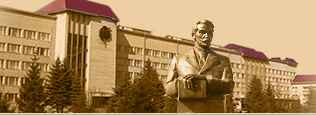THEMATIC GIS-MAPPING OF LANDSCAPES BASED ON REMOTELY SENSED DATA: CHALLENGES AND THEIR SOLVING.
Thematic mapping of landscapes on regional level is usually provided with a wide use of remotely sensed data and geoinformation technologies. From one side, this helps to achieve automation of technological processes during map compilation and preparation, leads to decrease of subjective factor during compilation routine, but from the other side –geomorphological patterns of landscapes, genetic characteristics of soils and plant formation during application of modern technologies for thematic landscape mapping should be considered. Otherwise it may cause errors in interpretation of remotely sensed data and compilation of thematic landscape maps. Thus, a number of specific challenges in methodology require solutions for effective and truthful landscape mapping including small contours visualization, fuzzy boundaries, issues in identification of land cover types, impervious surfaces, land cover complexity, dynamics of boundaries, issues in location of objects, in-situ verification. Solving these problems is possible using the most advanced techniques in remote sensing (hyperspectral imagery, ultra high spatial resolution), data processing technologies (object-oriented classification with the pattern recognition, expert post-classification), and the combinations of these modern techniques with knowledge and techniques of cartographers and landscape scientists, soil scientists and geobotanists that are familiar with the specifics of territory mapped and able to make a critical analysis and comparison of the results of computer processing with the results of processes that affect the map compilation. Thus, spatial data processing technology should be assistants to researchers of landscapes, but not to turn out support for research into a single tool that puts researchers on crutches.
Keywords: thematic GIS-mapping, landscapes, thematic maps, remotely sensed data interpretation
References:
- Bahrov N.V. Vzhljad v buduščee / N.V. Bahrov // Heopolytyka y еkoheodynamyka rehyonov. – Symferopol’: TNU, 2009. — T. 5. – Vy 1. — S. 3-6
- Barladin O. Pidhotovka danych DZZ dlja vykorystannja u mul’tymedijnych kartohrafičnych vydannjach. // Barladin, L.Mykolenko // Sučasni dosjahnennja heodezyčnoï nauky ta vyrobnyctva, II (20), 2010. S. 142-149.
- Prostranstvenno-vremennye otnošenyja v samoorhanyzacyy heosystem / V. Bahrov, V.A. Bokov, Y.H. Červanev // Heopolytyka y ekoheodynamyka rehyonov. – Symferopol’: TNU, 2005. — T. 1. – Vyp. 1. — S. 12-20.
- Sockova L.M. Konflykty pryrodopol’zovanyja v predelach zon sanytarnoj ochrany vodnych ob’ektov Kryma/ M. Sockova, E.A. Pozačenjuk, V.O. Smyrnov / Fizyčna heohrafija ta heomorfolohija (mižvidomčyj naukovyj zbirnyk). – K.: VHL “Obriï”, 2013 – Vyp.3(71). – S.282-291
- Sturman V.Y. Ekolohyčeskoe kartohrafyrovanye. / Y. Sturman – M.: Aspekt Press, 2003. – 251 s.
- Technolohyja data mining v zadačach prohnozyrovanyja razvytyja transportnoj infrastruktury // Fedoseev A.A., Mycheev S.V., Holovnyn O.K. // Sovremennye problemy nauky y obrazovanyja, # 1, 2013. Elektronnyj resurs. Režym dostupu: http://www.science-education.ru/107
- Urovny naučnoho otobraženyja heoprostranstva / P. Kovalev // Heopolytyka y ekoheodynamyka rehyonov. – Symferopol’: TNU, 2005. — T. 1. – Vyp. 1. — S. 167-184.
- Andrulewicz E., Witek Z. Anthropogenic Pressure and Environmental Effects on the Gulf of Gdansk: Recent Management Efforts // Baltic Coastal Ecosystems. Central and Eastern European Development Studies 2002, pp 119-139
- García R., de Castro J.P., Verdú E., María Jesús Verdúb Luisa María Regueras. Web Map Tile Services for Spatial Data Infrastructures: Management and Optimization, Cartography – A Tool for Spatial Analysis, Dr. Carlos Bateira (Ed.), (2012). Režym dostupu: http://www.intechopen.com/books/cartography-a-tool-for-spatial-analysis/web-map-tile-services-for-spatial-data-infrastructures-management-and-optimization
- Human-Environment Interactions: Current and Future Directions /: E.S. Brondizio, E.F. Moran. Springer, 2012 – 434 p. Režym dostupu: http://www.google.com.ua/books?id=Iim0baRlWzcC&printsec=frontcover&hl=uk#v=onepage&q&f=false
- Lipsky Z. The changing face of the Czech rural landscape // Lipsky Z. / Landscape and Urban Planning Volume 31, Issues 1–3, February 1995, Pages 39–45.
- Starodubtsev V.M., Truskavetskiy S.R. Desertification processes in the Ili River delta under anthropogenic pressure // Water Resources, March 2011, Volume 38, Issue 2, pp 253-256.
FULL TEXT:
